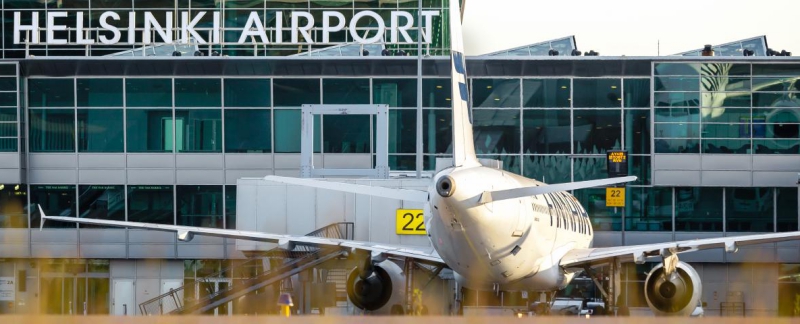The Finnish Transport and Communications Agency Traficom just announced that a serious incident occurred near Helsinki Airport on 13 May 2021, when a drone flew close to an aircraft wing when the aircraft was taking off. The agency considers the occurrence a serious incident and stresses that anyone operating a drone must be aware of prohibited and restricted airspace areas.
According to EU legislation that entered into force in the beginning of 2021, drone operators must be registered, they must familiarise themselves with the regulations concerning the operation of drones and they must as a rule pass a theoretical exam to ensure flight safety.
The crew of a commercial aircraft taking off at Helsinki Airport observed a remote-controlled aircraft near the aircraft’s right wing in the a.m. of 13 May 2021. The aircraft was at an altitude of approximately 400 metres at the time. The estimated flight location is in the restricted UAS geographical zone established to protect Helsinki Airport, where flight is allowed at an altitude of up to 15 metres above obstacles in the immediate vicinity of obstacles. This information can be found in the deviation report filed to Traficom by the airline.
“A higher flight altitude requires a permit issued by the air traffic service provider. The drone operator did not have a permit issued by air traffic control. A drone hitting the wing of an aircraft may cause significant damage, and the situation in question was very alarming,”
says Director Jari Pöntinen. Traficom and the Safety Investigation Authority have classified the incident as a serious incident.
Information on restricted zones easily available
Aviation is restricted in certain prohibited and restricted areas in Finland. These restrictions also apply to drones, which may not be operated in these areas without a special permit. Permanent prohibited and restricted areas have been specified in the Government Decree on areas where aviation is restricted (in Finnish). In addition to this, the flight of drones only may be restricted or prohibited in UAS geographical zones.
Drone operators must also observe temporary prohibited and restricted areas that are regularly established in Finnish airspace. These areas may be established to protect large public events or training activities by the Defence Forces. Information on any established temporary prohibited and restricted areas is provided in the Fintraffic air navigation services’ Aeronautical Information Services at ais.fi (External link) as supplements to the Aeronautical Information Publication.
Currently, one private web-based map service also provides the opportunity to check the route situation and any restrictions on a planned flight route. A private service at aviamaps.com (External link) offers information on Finnish airspace in almost real time and helps you make decisions on the safe execution of your flight.
Flying is safe when you know the rules
The legislation concerning drones was changed considerably at the start of 2021. At that time, the new EU norms harmonising the regulations of various countries and ending the previously liberal Finnish flight protocol entered into force.
The new regulations require that the people in charge of operating the devices, i.e. drone operators, must be registered in the so-called drone register. Only operators who fly devices that weigh less than 250 grammes and are not equipped with a camera or drones that are classified as toys do not need to register. There are currently more than 10,000 registered drone operators. Furthermore, the actual drone operators, or remote controllers, must familiarise themselves with the principles of flying drones and usually complete an online theoretical exam. Currently approximately 10,000 people have completed the exam.
“The increasing popularity of drone flying has also increased the number of hazardous situations caused by drones. New harmonised regulations will establish the same rules throughout the EU, which are put in place to ensure safe flight. Registration will provide authorities with a better ability to monitor flight operations, when we know who is operating what,”
says Team Leader Esa Stenberg.
Source: Press Release

